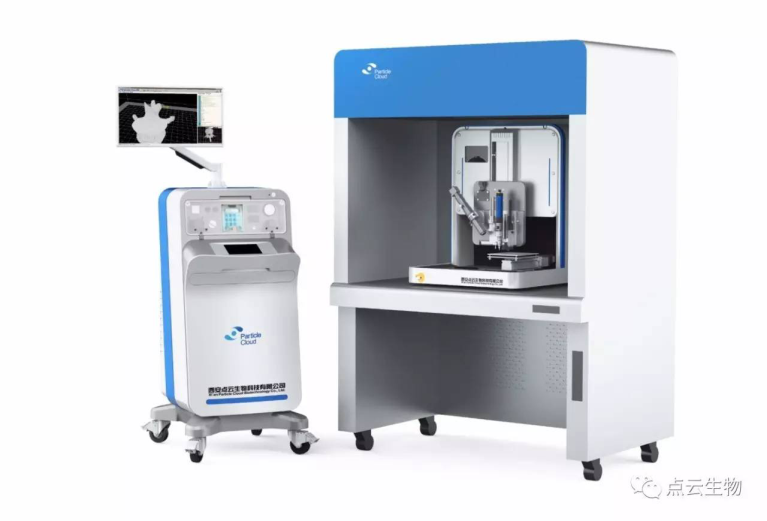
Bioprinters are typically used to 3D print soft tissue, but what about bones?
That’s exactly what Xi’an Particle Cloud Biotechnology, Ltd. achieved when they were able to successfully 3D print a biodegradable bone structure, which was subsequently implanted into a live subject.
How is this done? Xi’an Particle Cloud’s bioprinter uses a process they call “FFP” (Filament Free Printing), which appears to be a paste-like extrusion process. FFP allows a very wide variety of materials to be 3D printed for bio-use.
In the case of the biodegradable bone project, they used a mixture of inorganic materials typically found in human bones, such as hydroxyapatite, and mix them with collagen as a binder.
The resulting “bone” segment is implanted into a human subject, where over time the collagen dissolves and is replaced with actual bone generated by the subject’s natural body mechanisms.
Xi’an Particle Cloud has been working on this process since last year, first attempting the implantation on animal subjects, such as this rabbit.

In a first human trial, a 44-year old subject had incurred a fracture of the femur due to a fall. Due to the nature of this particular bone and the area of the break, it was considered difficult to treat using conventional methods: the bone could not be set properly.
As an alternative treatment, Xi’an Particle Cloud’s bioprinter was used to prepare a custom designed bone segment of 60mm length and 35mm diameter for implantation. The piece was implanted on February 2nd.
Six weeks later an inspection of the patient revealed that the implantation had been successful, as the 3D printed bone was integrating with normal body-generated bone material, apparently without infection or complications. The subject was even beginning simple exercises on the affected limb!
I feel this is an important development for a couple of reasons.
First, there are multiple bioprinting ventures at work, but few seem to produce anything other than experiments or very limited function results. This project appears to have produced a highly useful solution.
Secondly, the artificial bone concept could become a very widespread treatment. It seems this may be a solution for those incurring severe bone damage. While simple breaks are easily reset by aligning a few broken pieces together, the problem is vastly more complicated when there are large numbers of fragments.
In some cases bone damage can be so severe as to require the amputation of the limb because the bones cannot be set properly. But what if the broken pieces could be removed and a custom replacement bone were inserted in their place? This approach could make the difference between becoming an amputee or not.
Good work by Xi’an Particle Cloud.
Via Xi’an Particle Cloud (Chinese)

